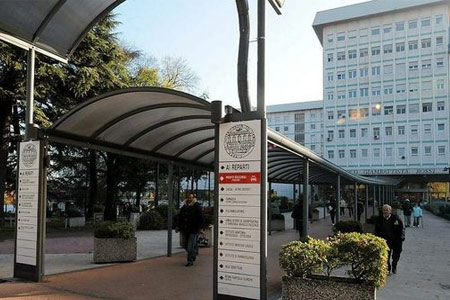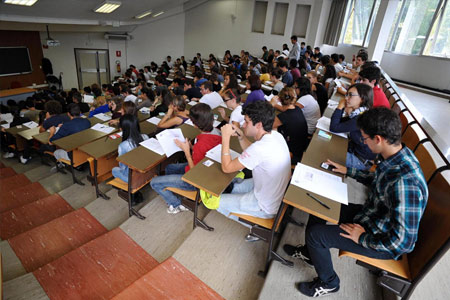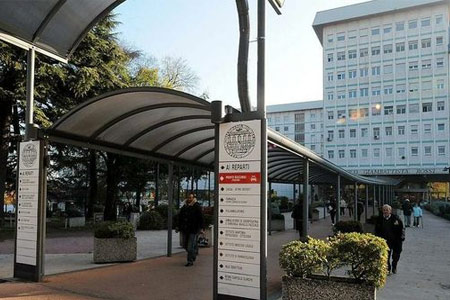- Authors:
-
Pio, Luca; Avanzini, Stefano; Mattioli, Girolamo; Martucciello, Giuseppe; Sementa, Angela Rita; Conte, Massimo; Gigliotti, Annarita; Granata, Claudio; Leva, Ernesto; Fagnani, Anna Maria; Caccioppoli, Umberto; Tedesco, Nino; Schleef, Jurgen; Tirtei, Elisa; Siracusa, Fortunato; D'Angelo, Paolo; Lelli Chiesa, Pierluigi; Miglionico, Lucia; Noccioli, Bruno; Severi, Elisa; Carlini, Claudio; Vaccarella, Francesco; Camoglio, Francesco Saverio; Cesaro, Simone; Narciso, Alessandra; Riccipetitoni, Giovanna; Cecchetto, Giovanni; Inserra, Alessandro
- Title:
-
Perioperative management of hypertensive neuroblastoma: A study from the Italian Group of Pediatric Surgical Oncologists (GICOP)
- Year:
-
2017
- Type of item:
-
Articolo in Rivista
- Tipologia ANVUR:
- Articolo su rivista
- Language:
-
Inglese
- Referee:
-
No
- Name of journal:
- Journal of Pediatric Surgery
- ISSN of journal:
- 0022-3468
- N° Volume:
-
52
- Number or Folder:
-
10
- Page numbers:
-
1633-1636
- Keyword:
-
Hypertension; IDRFs; Neuroblastoma; Pediatric surgical oncology; Risk factors
- Short description of contents:
- Background Hypertension (HT) is rarely reported in patients affected by Neuroblastoma (NB), and management guidelines are lacking. Clinical features and perioperative medical treatment in such patients were reviewed to 1) ascertain whether a shared treatment strategy exists among centers and 2) if possible, propose some recommendations for the perioperative management of HT in NB patients. Methods A retrospective multicenter survey was conducted on patients affected by NB who presented HT symptoms. Results From 2006 to 2014, 1126 children were registered in the Italian Registry of Neuroblastoma (RINB). Of these, 21 with HT (1.8%) were included in our analysis. Pre- and intraoperative HT management was somewhat dissimilar among the participating centers, apart from a certain consistency in the intraoperative use of the alpha-1 blocker urapidil. Six of the 21 patients (28%) needed persistent antihypertensive treatment at a median follow-up of 36 months (range 4–96 months) despite tumor removal. Involvement of the renal pedicle was the only risk factor constantly associated to HT persistency following surgery. A correlation between the presence of HT and the secretion of specific catecholamines and/or compression of the renal vascular pedicle could not be demonstrated. Conclusion Based on this retrospective review of NB patients with HT, no definite therapeutic protocol can be recommended owing to heterogeneity of adopted treatments in different centers. A proposal of perioperative HT management in NB patients is however presented. Level of evidence IV.
- Product ID:
-
98639
- Handle IRIS:
-
11562/967435
- Last Modified:
-
November 28, 2022
- Bibliographic citation:
-
Pio, Luca; Avanzini, Stefano; Mattioli, Girolamo; Martucciello, Giuseppe; Sementa, Angela Rita; Conte, Massimo; Gigliotti, Annarita; Granata, Claudio; Leva, Ernesto; Fagnani, Anna Maria; Caccioppoli, Umberto; Tedesco, Nino; Schleef, Jurgen; Tirtei, Elisa; Siracusa, Fortunato; D'Angelo, Paolo; Lelli Chiesa, Pierluigi; Miglionico, Lucia; Noccioli, Bruno; Severi, Elisa; Carlini, Claudio; Vaccarella, Francesco; Camoglio, Francesco Saverio; Cesaro, Simone; Narciso, Alessandra; Riccipetitoni, Giovanna; Cecchetto, Giovanni; Inserra, Alessandro,
Perioperative management of hypertensive neuroblastoma: A study from the Italian Group of Pediatric Surgical Oncologists (GICOP)
«Journal of Pediatric Surgery»
, vol.
52
, n.
10
,
2017
,
pp. 1633-1636
Consulta la scheda completa presente nel
repository istituzionale della Ricerca di Ateneo 








